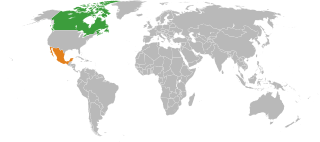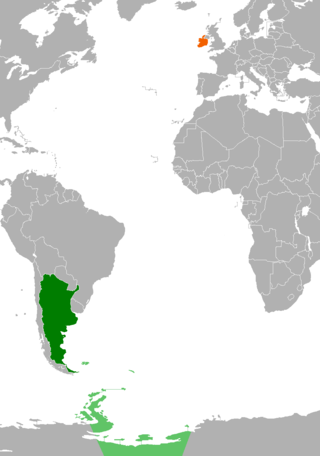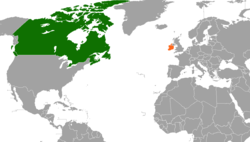
The Taoiseach is the head of government or prime minister of Ireland. The office is appointed by the President of Ireland upon the nomination of Dáil Éireann and the office-holder must retain the support of a majority in the Dáil to remain in office.

Éamon de Valera was an Irish statesman and political leader. He served several terms as head of government and head of state and had a leading role in introducing the 1937 Constitution of Ireland.

The Republic of Ireland Act 1948 is an Act of the Oireachtas which declared that the description of Ireland was to be the Republic of Ireland, and vested in the president of Ireland the power to exercise the executive authority of the state in its external relations, on the advice of the Government of Ireland. The Act was signed into law on 21 December 1948 and came into force on 18 April 1949, Easter Monday, the 33rd anniversary of the beginning of the Easter Rising.

The Leader of the Opposition in Ireland is a de facto term sometimes used to describe the politician who leads the largest party in the Parliamentary Opposition in the lower house of the Irish Parliament, Dáil Éireann. In the Dáil, the Leader of the Opposition sits on the right-hand side of the Ceann Comhairle and directly opposite the Taoiseach. The role is not an official one and is not recognised in the Irish constitution, nor in legislation.
Events in the year 1975 in Ireland.
Events in the year 1967 in Ireland.
Events from the year 1951 in Ireland.
Events from the year 1948 in Ireland.
Events from the year 1938 in Ireland.

Leo Eric Varadkar is an Irish Fine Gael politician who served as Taoiseach from 2017 to 2020 and from 2022 to 2024, as Tánaiste from 2020 to 2022, and as leader of Fine Gael from 2017 to 2024. A TD for the Dublin West constituency since 2007, he has held a range of other ministerial positions in the Irish government. His political stances have been described as centre-right economically; he has advocated free markets, lower taxes, and welfare reform. On social issues, he supported successful constitutional referendums to legalise same-sex marriage and to liberalise Ireland's abortion laws.
Fine Gael is a political party in Ireland, formed in 1933 as a merger of Cumann na nGaedheal, the National Centre Party, and the Blueshirts.

The nations of Canada and Mexico established formal diplomatic relations in 1944. Initially, ties between the two nations were dormant, but since the 1990s relations between Canada and Mexico have positively developed as both countries brokered NAFTA.

Bilateral relations between the Argentine Republic and Canada have existed for over a century. Both nations are members of the Cairns Group, G20, Organization of American States and the United Nations.

Diplomatic relations exist between Australia and Ireland. Australia and Ireland share a historical connection and remained part of the British Empire until their respective independence. Over 300,000 Irish settlers migrated to Australia to escape poverty in their homeland and over 2 million Australian citizens claim Irish ancestry. Both nations are mutual members of the Australia Group, Organisation for Economic Co-operation and Development and the United Nations.

France–Ireland relations refers to the bilateral relations between France and Ireland. France and Ireland are both members of the Council of Europe, European Union and the Organisation for Economic Co-operation and Development. Ireland is an associate member of La Francaphonie.

Canada and Italy. Both nations enjoy friendly relations and are close allies and partners through their membership in the G7, G20, NATO and the Organisation for Economic Co-operation and Development. Relations also centre on the history of Italian migration to Canada; approximately 1.5 million Canadians claim to have Italian ancestry.

Foreign relations between the Argentine Republic and Ireland, have existed for over a century. Both nations share a history of Irish culture after over 50,000 Irish settlers migrated to Argentina. Argentina is home to the fifth largest Irish community abroad and the biggest in a non-English speaking nation. Over half a million Argentine nationals claim Irish heritage. Both nations are members of the United Nations.
Events during the year 2017 in Ireland.

Diplomatic relations between Canada and Senegal began in 1962. Both nations are members of the Organisation internationale de la Francophonie.
The 2017 Fine Gael leadership election was triggered in May 2017, when Enda Kenny resigned as leader of Fine Gael. Voting began by members of Fine Gael and Young Fine Gael on 29 May 2017. On 2 June Leo Varadkar was announced as the victor, beating rival Simon Coveney. With Fine Gael being the governing party at the time, this election effectively selected a new Taoiseach for Ireland.















